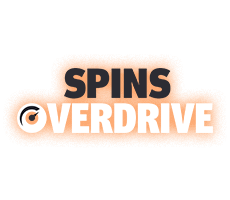How to play
Tips to decide when to raise or call in poker
Calling may seem the safer option, but a lot of the time raising is better. Here we’ll explain why, with topics including:
Committing to win
A good rule of thumb is: if it’s not good enough for a raise it’s not good enough for a call. So if you have the best hand, you should raise for value. If not, fold (unless the odds look good for improving to a better hand).
In late position, you could find yourself in a hand where people are folding and limping and no-one seems that keen. By being the raiser or the initial bettor, you can scoop these easy pots and add them to your stack.
Either way, a raise has the potential to pay off nicely, where a call doesn’t.
Hand example #1
- $0.25/$0.50 full ring cash game
- Your position: mid-position
- Your hand: 9♣ 9♦
- Action to you: folded round
Two nines isn’t the best hand in the world – but if you raise here, your prospects look up, because:
- Everyone could fold and you’ll take the blinds
- You might get called, continuation bet and take the pot on the flop
- You could flop a set and win a big pot against an opponent’s overpair
Sure, you could get called and miss the flop, but who’s going to know? As the pre-flop raiser, you’ve got people worried. So unless the flop is an obvious no-go, you can still bet, with a fair chance of getting other players to fold. Something you couldn’t have done if you called.
Why aggressive poker is better
The phrase ‘check to the raiser’ has a lot of truth in it. Players who called pre-flop tend to check to the pre-flop raiser. If this happens to you in a 1 on 1 situation, a nifty bet between two thirds and three quarters of the pot should clinch it, whatever your cards.
People miss the flop two thirds of the time, so if they see the pre-flop raiser raising again, they’ll take the hint and fold. Just be aware that if you’ve missed the flop and have more than one opponent, things can get tricky.
Moral of the story: raising pre-flop gives you control and you should continuation bet almost any time you’re just up against a single opponent.
Hand example #2
- $0.25/$0.50 six max cash game
- Your position: button
- Your hand: J♦ 10♦
- Action to you: two folds, cut-off player limps
Raising is better here for a variety of reasons:
- You can charge the blinds (who are out of position for the rest of the hand), a premium to see a flop
- The fact the cut-off limped probably means he has a marginal hand that he’d like to see a cheap flop with. Disappoint him by raising
If someone calls you? No problem. A continuation bet on any flop will win enough of the time to make it worthwhile. Just don’t price the limpers out of the hand – raising to $2.50 total would be about right.
How to win more from fewer pots
The trick here is not to play more hands, but be more selective – and when you do play, go for it. This style is called tight-aggressive, or TAG for short, and will give you more credit for a big hand even when you’re bluffing.
Hand example #3
- $0.25/$0.50 six max cash game
- Your position: under the gun
- Your hand: J-J
- Action to you: first to act
About 95% of the time you should open raise for four-times-the-big-blind. In this example, the flop comes A-Q-4. You should bet to represent the ace.
Yes, the board is a little scary, but if you check you’re telling your opponent you don’t have the ace, and eventually you’ll be forced to fold.
If your opponent calls, don’t panic – continuation betting is so common that their hand probably isn’t anything special. So unless the turn looks really bad (a K, Q or 10 in this case), you should just keep going. By showing strength all the way through, chances are you’ll force them to fold – which would never happen if you’d called at the start.
Hand example #4
- $0.25/$0.50 full ring
- Your position: cut-off
- Your hand: 10-10
- Action: folds to hijack who raises to $2
You could flat-call here. But a re-raise puts you in a much better position, because your opponent’s reaction will tell you something about what he’s holding. Let’s say you raise to $7 and your opponent re-raises to anywhere between $20 and $30 (a sensible re-raise size). If you both have $50 stacks, we now know a) he’s not folding (he has around 50% of his chips in the pot already) and b) you’re probably way behind – or at best up against A-K.
So you can fold here, safe in the knowledge that you probably lost the minimum (as opposed to your whole stack if the flop came nine high).
If he folds, of course that’s great. But if he calls, what does that tell us? Probably that he likes his hand and wants to see the flop, but he’s not that excited about it. So if he misses the flop, he’ll most likely fold.
Practice with the help of our poker coach, Whizz, and improve your game!
Create Account
